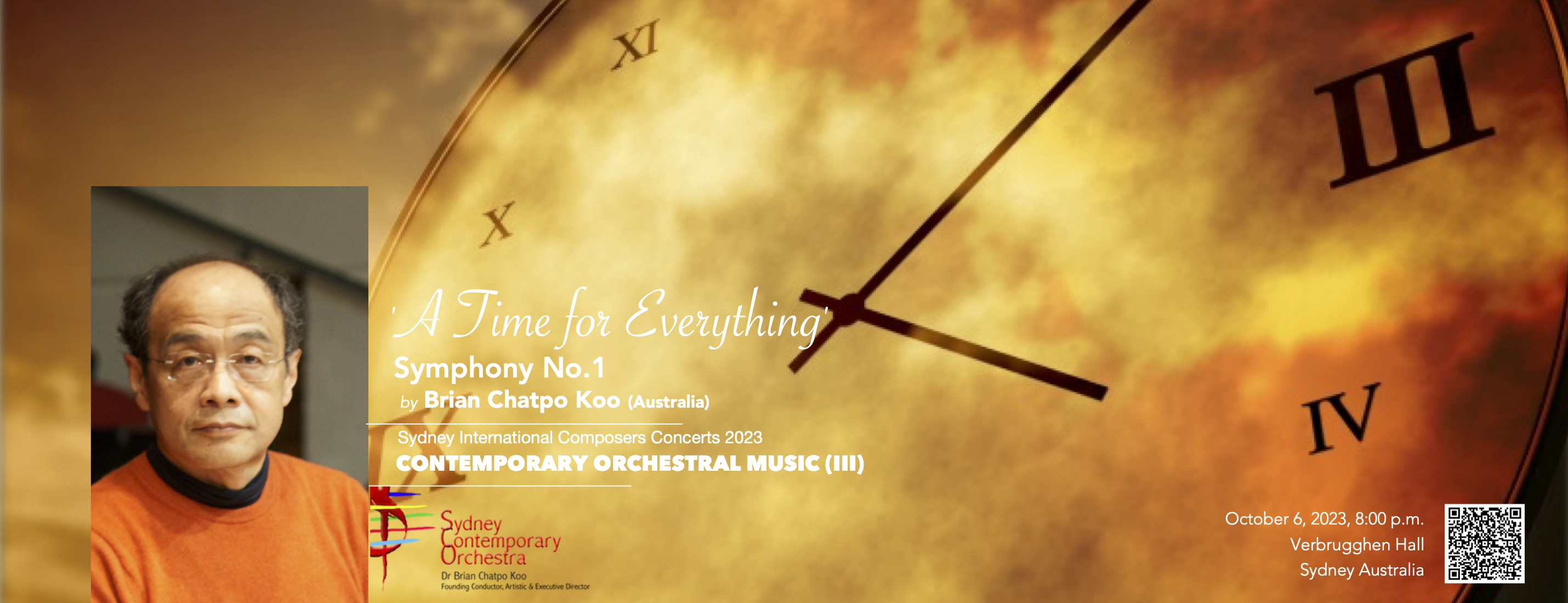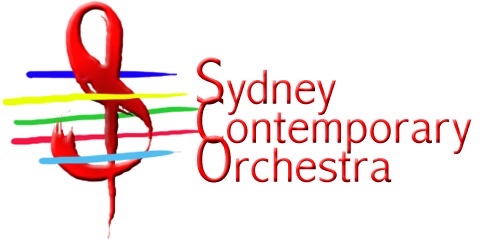Symphony No 1

a time to be born and a time to die,
a time to love and a time to hate
a time to kill and a time to heal
a time to mourn and a time to dance
‘A Time for Everything’ Ecclesiastes, 3:1-8
Inspired by these extracts, this symphony was planned in 1989. The first draft was written in 1999 and completed in 2000.
Using the ‘Method of Extension’ this symphony is derived from a five pitches cell: D, Eb, E, F#, and G#, exposing the characteristics intervals repertory of the work as a whole.
This cell is proliferated by expanding the intervals from minor 2nds to octaves. The result of the proliferation is a 23-pitch collection that serves as a basic structural component of the pitch materials. Three basic motives are derived from these pitch sets. The motives are used in various aspects producing a variety of qualities of emotion, tension, and direction.
This work is a 42-minute single-movement Symphony, divided into six sections:
- Prelude
- Voice of Spring – a time to be born and a time to die,
- Love Song – a time to love and a time to hate
- Notices of War Drums – a time to kill and a time to heal
- Elegy – a time to mourn
- A Time to Dance – a time to dance
Based on the Fibonacci sequence (3′ 5′ 8′ 13′ etc.) these sections are divided and work with specified functions: an introduction followed by an exposition of numerous basic ideas and subjects, a development, and a conclusion
Opening the symphony, the pitches of Motive A and B are gradually introduced by the horns and completed by a tone cluster in the strings along with the piano and harp. This string tone cluster is used in all sections as a background accompaniment figure to unify the entire work. From this string tone cluster, an intermittent melody is derived from Motive B in the first violin.
As an “Exposition” the first subject opens Section II in the solo oboe. This is a melodic variation of Motive A which consists mostly of unessential notes while the Motive is completed at the first chord in the piano and the harp. The strings take over and gradually eliminate the unessential pitches of the Motive and finally establish the 2nd main subject.
It leads to Section III in a new form of Motive A as the 3rd Subject, an agitated running passage. The passage with various kinds of modifications combinations and developments dominates the first half of the section. The climax is built upon motive A which is followed by a contrasting them in the second half of the section. The theme, 4th Subject built upon Motive C – is a slow tender love song in the strings.
At the beginning of Section IV, Motive A becomes a depressing sound cluster in the low instruments and gradually ascends to the higher registers of the orchestra implying that there is something in the air. Against a sustained single high Eb taken from Motive B, the brass instruments burst out a theme erected from Motive C. With a prolonged modification this theme as it unfolds as a development leads to the main subject, a brassy theme of Motive A. This becomes a prominent subject that recurs at the end of the Symphony.
Section V employs new material along with the basic motive. It commences with Motive A in a slow mournful theme in the low strings. This theme gradually becomes replaced by the higher strings in the fugal style.
The final appearances of Motives A and B are the dance-like themes for the percussion instruments that open Section VI. After the dance-like opening, this conclusion reminiscent of Section IV which is dominated by the brassy theme, grandly finishes the Symphony.
